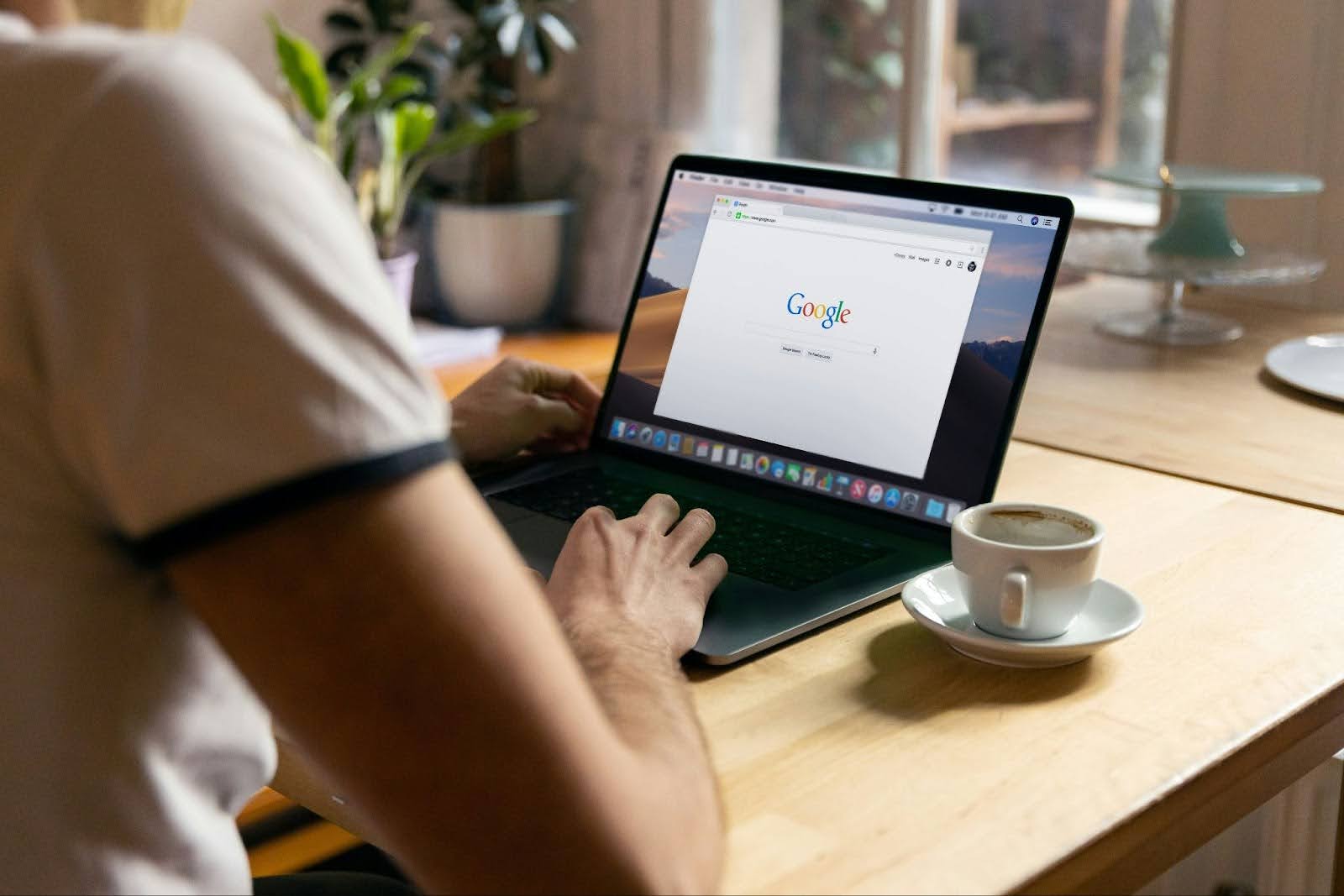Screen Time Rules: Not Just for Kids Anymore
You’ve probably heard of screen time rules for children and teenagers. These help parents prevent access to adult websites, encourage kids to socialize and spend time outside, and handle whatever responsibilities they might have.
But that’s usually where the conversation ends.
For adults, the thought of applying screen time rules for ourselves is often overlooked. Shouldn’t we have enough discipline to handle this on our own?
This couldn’t be further from the truth. In this age of unprecedented screen access and interactions with tech designed to be addictive, it’s never been more important to use every tool we can to ensure our screen time is healthy and intentional.
Understanding the Scope of the Problem
Kids aged eight to 18 spend an average of 7.5 hours in front of screens for entertainment every day.
This isn’t something we just grow out of either. A Common Sense Media survey of 1,800 parents of children aged eight to 18 found that they spend a staggering nine hours and 22 minutes of screen time every day – eight of which were for personal use! Total screen time would have been even higher if the survey hadn’t targeted a wide range of occupations, many of which didn’t require screen use on the job.
Most unsettling: about 80 percent of the parents surveyed believed that they were good role models for how to use digital technology. This shows a serious lack of awareness of the scope of the problem.
We don’t just have more access to screens than ever before. We’re also facing an entirely new type of problem. For the first time in history we have the capability and data required to program tech that essentially hacks our biology to grab attention and keep us coming back. This is great for tech companies looking to increase engagement and ad revenue… but dangerous for users who would rather spend their precious time elsewhere.
Screen Time and Your Health
We’ve all been there. What starts out as an innocent plan to check your Instagram feed ends with dozens of open browser tabs. Hours blur, and after a trip down the black hole of recommended YouTube videos, you wonder where the afternoon went.
This technology can be great for connecting us, entertaining us, and teaching us new things. But only if you’re using it in a healthy way.
The threats to productivity are obvious. What’s often overlooked are the very real health risks.
Mental Health Risks
Tech offers an easy escape from the challenges of real life, feel-good dopamine spikes instead of being forced to confront negative emotions or conflicts. It recreates life’s experiences vicariously, sometimes deceiving our brains with a false sense of accomplishment – like you’d feel “leveling up” in a video game.
Dopamine tricks our brains into thinking that we’re staying connected, productive, and doing something meaningful. But in reality, we’re staying inside, isolating ourselves from face-to-face interactions, and threatening our self-esteem by comparing our lives with all the wonderful ones on social media.
A study in the psychological journal Emotion found a correlation between daily screen time use and feelings of unhappiness. The teenage participants who spent more than a couple hours a day interacting with tech gadgets were unhappier than those who spent more time socializing face to face.
Physical Health Risks
All that time spent in front of screens makes it more difficult to stay active and physically healthy. While you might see people walking down the street staring at their phones (they might even run into you!), screen time is mostly a sedentary activity. We sit and watch instead of getting outside and moving around.
You’re probably familiar with the research that found excessive sitting is just as dangerous as smoking. Adding on a bunch of recreational screen time to mandatory screen time at work only compounds the problem.
We also can’t forget about posture. Most screen users slouch, with rounded shoulders and hunched necks. This strains your neck, back, and shoulders, as well as your eyes.
Sleep
Too much screen time can also disrupt healthy sleep patterns. The dangers here are two-fold. First, quantity of sleep is at risk because we lie around playing with devices instead of going to bed when we should. Notifications ping throughout the night, sometimes waking us up.
Quality of sleep also takes a hit. Many of us are on screens shortly before bed because we use them to wind down. But the blue light from those devices mimics the effect of sunlight, disrupting your circadian rhythms and production of melatonin, the sleep hormone.
Notice how all these aspects are connected. Too much screen time might keep you from sleeping well, which leaves you feeling sluggish and underperforming at work. And that might make you even more stressed out and anxious about losing your job. The excess screen time kicks off a vicious cycle.
Screen Time and Relationships
How often have you seen a couple eating in a restaurant together with both heads buried in their smartphones?
This happens all the time. There’s even a new term for it, “phubbing,” which is snubbing your real-life company by looking at your phone. A study published in Computers in Human Behavior found that it creates conflict and decreases a partner’s levels of reported relationship satisfaction.
This sharp increase in screen time doesn’t just limit the quantity of our real-life interactions. It can also disrupt the quality. Even when you manage to get your friends to do something social, their attention is lacking.
Notifications ping every minute or so, interrupting conversations. And the constant flood of new information accumulating on social media feeds convinces us that, unless we stay on top of it all, we’re missing out. Fear of missing out (FOMO) makes us often neglect the people right in front of us.
Is It Making Us Happier?
Adults have embraced screen time wholeheartedly. The generation entering adulthood now grew up with them; they simply don’t know any different.
Some screen time is mandatory for work, so there’s no getting around that. But what about all that time we spend using screens for fun? All those hobbies and contemplation time we’ve replaced to scroll, tap, and click our way to constant stimulation?
You have to wonder if it’s making us any happier.
Not necessarily.
Using screens might make us feel good for the moment, but those feelings don’t last. It’s kind of like the empty calories you’d get eating a doughnut or drinking soda. There’s a burst of sugary sweetness, followed by a letdown. You’re still isolated – and those potentially productive hours are gone.
That said, there’s no reason why you need to eliminate screen time completely. The key is to set healthy boundaries. When you’re competing with technology engineered to be addictive, it’s hard to rely on willpower alone.
Website blockers like Freedom help you set boundaries and develop a healthier relationship with tech. Recurring sessions run over and over again during time blocks you schedule, blocking time-wasting websites and allowing you to build better habits. And for those moments when you can’t handle the cravings or really need to work, there’s always locked mode. It makes it impossible to delete the block lists or devices until your active Freedom session ends.
How to Set Healthy Screen Time Rules
A better relationship begins by deciding how much time you want to spend in front of screens. This doesn’t have to be the same for every day, but knowing your limits allows you to work backwards and put that time to best use. You might reconsider checking Facebook for the ninth time if you knew you only had thirty minutes left that day.
Once you have your screen time limits in mind, it’s time to get clear on why you’re making this commitment. As computer science professor and productivity expert Cal Newport points out, unless you give yourself good reasons to avoid the screen time, that hankering to hop on YouTube or check your social media accounts is that much harder to resist.
Newport recommends writing a personal “attention charter,” a document that guides your decisions about when you’ll allow yourself some screen time. You get to define which circumstances must met before you’ll allow the screens into your life.
The Freedom app will help you limit unplanned screen time and develop a healthier relationship with tech. However, it’s just a tool. It’s ultimately up to you to decide how to use it – as well as any other screen time rules you’d like to set.
Aside from using Freedom, brainstorm a few rituals you would like to enjoy screen-free. This might mean turning off devices during family dinners, walks, or chats with friends, or no screens an hour before bed. Tim Ferriss loves his screen-free Saturdays.
If you’re feeling overwhelmed, you can always move gradually. Start with a website blocking app like Freedom. Experiment with one screen-free ritual that’s manageable. You might find that you enjoy the real-life interactions and peace of mind so much that you’ll be eager to try more.
Changing Your Tech Habits for Good
So much of our screen time these days happens inadvertently. Habits we don’t even realize that we’ve formed have become deeply ingrained, and they drive us to react without thinking.
Building a healthier relationship with this technology starts by building better habits.
How?
First we need to identify the triggers that drive us to spend all that time with screens. Simply telling yourself that you’ll stop checking Twitter so much tomorrow isn’t good enough. Knowing the triggers helps you understand what’s motivating the incessant Twitter-checking in the first place.
Common screen time triggers include:
- Certain sensations and/or emotional states. Pay attention to when you’re most likely to binge with your screen time. Are you often hungry, stressed, or bored?
- Familiar environments.
- Notifications. Texts, emails, push notifications from apps, etc.
- Rituals. Far too many of us check the email on our phones the moment we wake up. We repeat the behavior so often that it happens automatically.
Once you pinpoint what your triggers are, it’s time to create barriers between them and unwanted screen use.
If you can’t help but react to those constant notifications coming in on your smartphone, turn them off. Add problematic websites to a Freedom block list so you’ll gain awareness every time you try to visit them. Maybe rearrange how apps are displayed on your tablet, or put your phone in grayscale – anything to disrupt the seamless trigger and response pattern happening now.
While you work to remove bad habits at their roots, replace them with all the things you used to do! Schedule date night with your partner, go hiking with a friend, or take some time to go on a quiet bike ride just thinking. And when you do choose to use screens, do so with your full attention. You’ll appreciate that time more when it’s limited.
Screen time can be a fun way to connect and have fun – as long as it’s in moderation. If you’re wasting too much time caught in the addictive tech cycle, it’s time to build a healthier relationship. Tools like Freedom will empower you to do just that!



